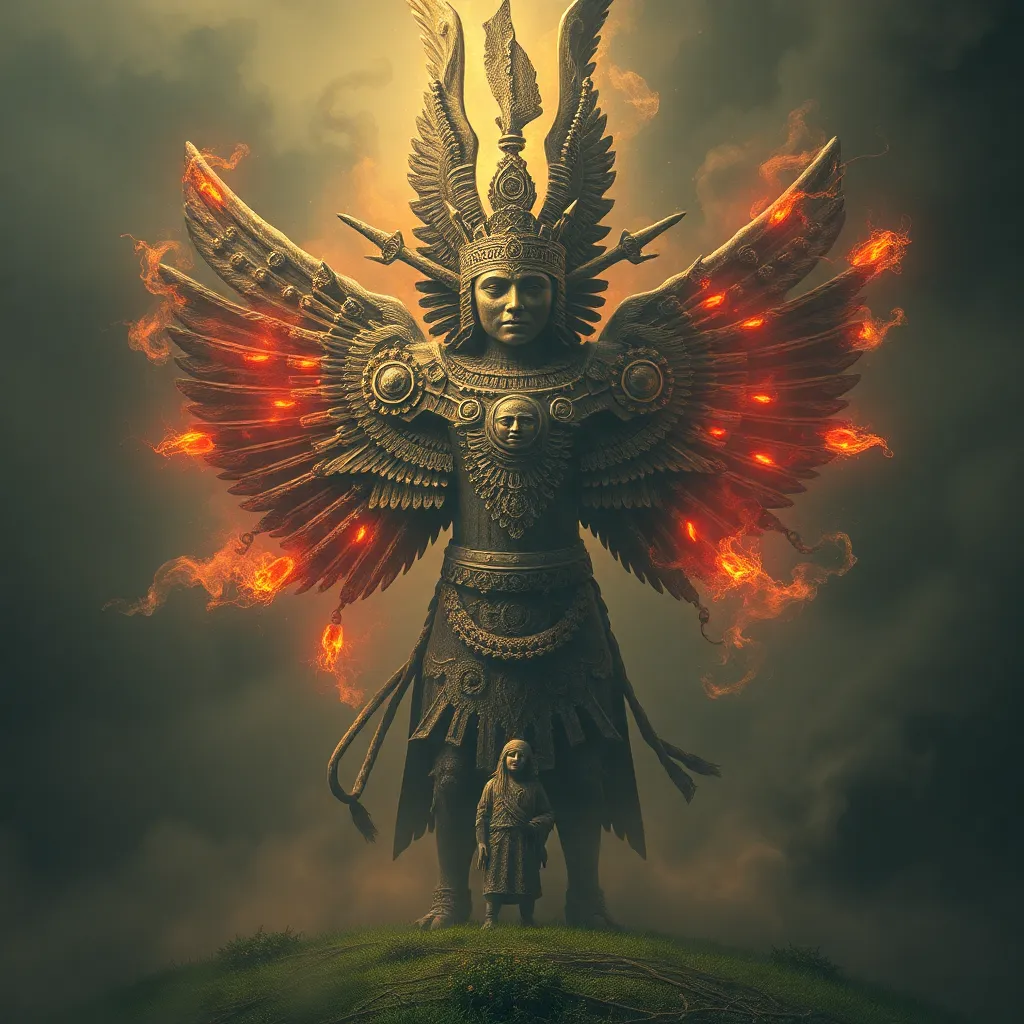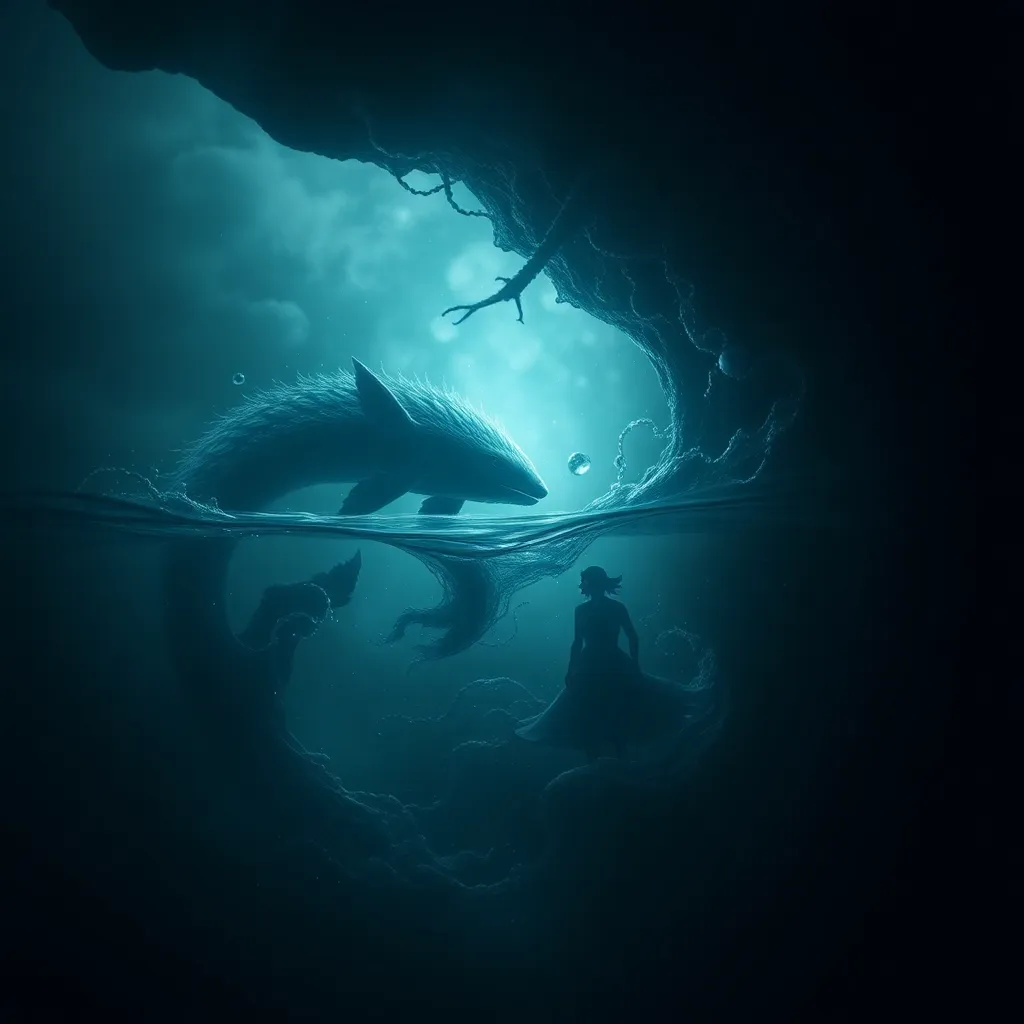The Basilisk as a Metaphor for Evil: Exploring the Monster’s Role in Early Christian Art
I. Introduction
The Basilisk, a legendary creature often depicted as a serpent or dragon, has its roots in ancient mythology and folklore. Known for its lethal gaze and venomous bite, the Basilisk embodies the terrifying aspects of nature and the supernatural. In early Christian art, the Basilisk transcends its mythological origins to become a powerful symbol of evil, representing sin, temptation, and spiritual danger.
This article aims to explore the representation of the Basilisk in early Christian art, examining its historical context, theological implications, and artistic portrayals. Through this exploration, we will uncover the metaphorical significance of the Basilisk as a reflection of humanity’s struggle against evil.
II. Historical Context of the Basilisk
A. Origins in ancient mythology and folklore
The Basilisk’s origins can be traced back to ancient texts, with early references appearing in the writings of Pliny the Elder. Described as a creature that could kill with its gaze, the Basilisk was often associated with the desert and the underworld. Its fearsome reputation made it a subject of fascination and dread.
B. Transition of the Basilisk’s image from pagan to Christian interpretations
As Christianity spread, many pagan symbols and creatures were reinterpreted within a Christian framework. The Basilisk, once a symbol of pagan mythology, began to represent the devil and sinful temptation. This transformation allowed early Christians to utilize the Basilisk’s fearsome qualities in their teachings about the dangers of sin.
C. The Basilisk’s role in medieval bestiaries
Medieval bestiaries, compilations of descriptions and moral lessons about animals, further solidified the Basilisk’s symbolic association with evil. Within these texts, the creature was often depicted alongside other monsters and beasts, each representing various vices. The Basilisk’s entry into these bestiaries reinforced its role as a moral warning against the perils of sin.
III. Symbolism of the Basilisk in Christian Theology
A. The Basilisk as a representation of sin and evil
The Basilisk serves as a potent metaphor for sin and evil in Christian theology. Its lethal gaze symbolizes the corrupting nature of temptation, leading the faithful away from God. The creature embodies the idea that sin, like the Basilisk’s venom, can destroy lives.
B. Connections to biblical themes of temptation and corruption
Throughout the Bible, themes of temptation and corruption are prevalent. The Basilisk’s representation aligns with these themes, echoing the serpent’s role in the Garden of Eden. Just as the serpent led Eve to sin, the Basilisk represents the spiritual dangers that lurk in the world, waiting to ensnare the unwary.
C. The Basilisk as a symbol of the devil and spiritual danger
In many early Christian texts, the Basilisk is directly associated with the devil. It is portrayed as a creature that embodies evil, seeking to lead souls astray. This association serves as a reminder of the constant spiritual warfare faced by believers and the vigilance required to resist temptation.
IV. Artistic Representations of the Basilisk
A. Notable examples of Basilisk imagery in early Christian art
Early Christian art features various representations of the Basilisk, often depicted in illuminated manuscripts, frescoes, and sculptures. Notable examples include:
- Illuminated manuscripts like the “Book of Hours,” where the Basilisk is often shown in the margins, symbolizing the ever-present threat of evil.
- Frescoes in churches that depict the Basilisk in scenes of moral instruction, emphasizing the need for vigilance against sin.
- Stone carvings on cathedrals, where the Basilisk is integrated into the iconography of good versus evil.
B. Artistic styles and techniques used to depict the creature
Artists utilized a variety of styles and techniques to depict the Basilisk, often emphasizing its fearsome nature through exaggerated features. Common techniques included:
- Use of vibrant colors to enhance the Basilisk’s menacing appearance.
- Dynamic compositions that convey movement, suggesting the creature’s threat.
- Symbolic elements, such as flames or dark clouds, to enhance the creature’s association with evil.
C. The role of the Basilisk in church iconography and decoration
In church iconography, the Basilisk was often positioned alongside saints and biblical figures, serving as a reminder of the spiritual battles faced by the faithful. Its presence in decoration reinforced the themes of vigilance and moral integrity central to Christian teachings.
V. The Basilisk in Literature and Scripture
A. References to the Basilisk in early Christian texts
The Basilisk appears in various early Christian texts, including the Bible, where it is often mentioned alongside other dangerous creatures. For instance, in the Book of Isaiah, the Basilisk is referenced as a symbol of destruction and chaos.
B. Comparative analysis of literary descriptions and artistic portrayals
Literary descriptions of the Basilisk often emphasize its lethal qualities, paralleling the visual representations in art. Both mediums depict the creature as a formidable force, embodying the dangers of sin and temptation.
C. The influence of these texts on the perception of the Basilisk in art
The theological and literary interpretations of the Basilisk significantly influenced its artistic portrayals. Artists drew from these texts to craft imagery that conveyed the creature’s moral lessons, ensuring that viewers understood its symbolic significance.
VI. Theological Interpretations and Debates
A. Different interpretations of the Basilisk’s symbolism among theologians
The Basilisk’s symbolism has been interpreted in various ways by theologians throughout history. Some view it strictly as a representation of evil, while others see it as a warning against the dangers of pride and temptation. This diversity of interpretation reflects the complexity of moral and spiritual themes in Christian thought.
B. Controversies surrounding the creature’s representation in Christian art
Debates have arisen regarding the appropriateness of depicting the Basilisk in religious art. Some theologians argue that such representations could glorify evil, while others contend that they serve as vital reminders of the constant presence of sin in the world.
C. The Basilisk’s dual role as both a warning and an object of fascination
The Basilisk’s portrayal in art encapsulates its dual role as both a warning against sin and an object of fascination. This tension reflects humanity’s complex relationship with evil, drawing viewers into contemplation of their moral choices.
VII. Legacy of the Basilisk in Later Art and Culture
A. Evolution of the Basilisk’s imagery in Renaissance and modern art
The Basilisk’s imagery evolved significantly during the Renaissance, where it was often depicted in more humanized forms, reflecting the changing attitudes toward mythology and morality. Modern interpretations continue to draw upon the creature’s symbolic associations with evil, adapting its representation to contemporary contexts.
B. The Basilisk’s impact on popular culture and literature
In popular culture, the Basilisk has appeared in various forms, from literature to film. Its legacy endures in stories that explore themes of evil, temptation, and moral conflict. Notable examples include:
- The Basilisk in J.K. Rowling’s “Harry Potter” series, where it symbolizes fear and the consequences of unchecked ambition.
- References in fantasy literature, where the creature often serves as a formidable antagonist representing dark forces.
C. Contemporary interpretations of the Basilisk as a symbol of evil
Today, the Basilisk is often interpreted through the lens of modern moral dilemmas, serving as a reminder of the ever-present nature of evil in society. Its representation encourages reflection on personal values and ethical choices.
VIII. Conclusion
The Basilisk serves as a powerful metaphor for evil in early Christian art, encapsulating the struggle between good and evil that defines human existence. Through its rich historical context, theological implications, and artistic representations, the Basilisk emerges as a multifaceted symbol of sin, temptation, and spiritual danger.
As we reflect on the enduring legacy of the Basilisk, we recognize the importance of mythological creatures in understanding moral and spiritual themes in art. They challenge us to confront our fears and temptations, guiding us toward a deeper understanding of our values and beliefs.



